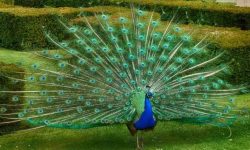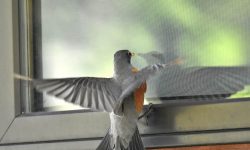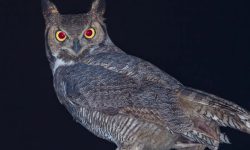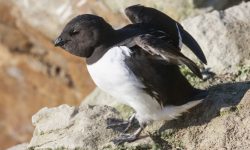The Common Kingfisher is one of the most striking and beloved birds found across rivers, wetlands, and quiet lakesides. Its vivid colors, rapid hunting dives, and patient fishing habits make it a favorite among birdwatchers and photographers. Although tiny in size, this bird displays a surprising level of skill, intelligence, and adaptability that sets it apart from many other freshwater species.
Understanding the Common Kingfisher requires more than simply admiring its bright plumage. Its daily behavior, feeding methods, territory choices, and nesting practices reveal a deeper story about how it survives in complex aquatic environments. Every movement, from a single hover above water to the precise moment of capturing a fish, reflects a life shaped by instinct and fine-tuned evolution.
This article explores everything you need to know about the Common Kingfisher, including how to identify it, how it behaves through the seasons, what it eats, and why this small bird is far more fascinating than its size might suggest.
Identification of the Common Kingfisher

Appearance and plumage
The Common Kingfisher is instantly recognizable thanks to its vivid, jewel-like colors. The upperparts glow with bright turquoise blue that reflects sunlight in a shimmering display. This effect becomes even more striking when the bird perches above water, creating a contrast between its blue back and the greenish or brownish water below. The underparts, from the throat down through the belly, are rich orange or chestnut, producing a warm tone that stands out against riverbank vegetation.
The bird’s head carries blue and black streaking with a prominent white patch at the throat and another white mark on the side of the neck. These markings help differentiate individuals in the field, especially when watching their interactions around territory boundaries. The bill is long, straight, and sharply pointed, perfectly suited for spearing through water with minimal resistance. The male’s bill is entirely black, while the female’s has a reddish lower mandible, a subtle but reliable field mark.
Its wings are short and rounded, which allows rapid acceleration during flight. When the kingfisher moves along streams or rivers, it flies low and straight, appearing as a streak of blue that disappears almost instantly behind bends or vegetation. These physical traits combine to create a bird designed for speed, stealth, and precision.
Size, shape, and field marks
The Common Kingfisher is small, typically measuring around seventeen centimeters in length, with most of that length contributed by its bill and tail. Its compact body and short legs give it a perched silhouette that looks almost round. Despite its small size, the bird has a powerful build that supports strong wingbeats and sudden forward lunges when hunting.
The long bill is the clearest identification mark. When seen from the side, the bill’s length nearly matches the bird’s head, forming one of the most distinctive profiles among freshwater birds. The feet are bright orange and small compared to its body, useful mainly for gripping narrow branches or reeds. Observers often notice the bird’s habit of perching very still for long periods, sometimes appearing as a bright spot against a dark branch.
When the bird takes flight, the blue upperparts flash like a spark of light. Even if the species is unfamiliar, the color alone is often enough to confirm identification. These characteristics make the kingfisher one of the easiest birds to identify once its general range and habitat are known.
Differences between males and females
Sexual dimorphism in the Common Kingfisher is subtle but noticeable once you know where to look. The female has the same vibrant plumage as the male, but her lower mandible is partly orange, especially toward the base. Males, on the other hand, have an entirely dark bill. This difference becomes clear in good lighting or when the bird is holding its bill at a slight angle.
Juveniles can also be distinguished by their duller plumage and darker legs. Their feet appear brownish rather than bright orange. The blue tones on young birds are less iridescent and have a more matte quality. These differences fade as the young kingfisher matures through its first months, eventually adopting the brilliant adult coloration.
Behavior of the Common Kingfisher
Territory and daily habits
The Common Kingfisher is highly territorial, especially during the breeding season. A pair may defend several hundred meters of riverside habitat. Each territory includes perching sites for hunting and land suitable for excavation of nesting tunnels. The borders are patrolled frequently. Intruders are chased away through sudden flight displays or warning calls.
Throughout the day, the kingfisher moves between lookout perches. It chooses branches that extend slightly over water, giving it the perfect angle for spotting prey below the surface. From these perches, it remains still for long periods. Only the head moves, turning carefully as the bird looks for slight ripples indicating fish movement.
Kingfishers are generally solitary outside breeding periods. Even mated pairs often maintain distance during feeding. Each individual uses sharp whistles to communicate or warn others when an area is already claimed. These calls echo along riverbanks, helping keep territories clearly divided and reducing unnecessary conflict.
Flight and hunting movements
The Common Kingfisher flies low and direct, usually just above the surface of the water. This minimizes its visibility to prey animals and reduces wind resistance. Its rapid wingbeats create a smooth, straight flight path that ends with the bird quickly returning to a perch.
When hunting, the kingfisher may hover briefly over the water. This hovering behavior is one of its most fascinating traits. The bird flaps its wings rapidly while facing into the wind, maintaining a fixed position. This technique helps the kingfisher assess depth, angle, and movement of fish below the surface. Once it locks onto a target, the bird dives headfirst with remarkable accuracy.
After capturing prey, the kingfisher returns to a perch and strikes the fish against a branch to kill or stun it. This behavior ensures the fish is swallowed headfirst, which prevents fins from catching in the bird’s throat. The entire sequence, from spotting prey to swallowing it, often happens in just a few seconds.
Breeding and nesting behavior
Breeding season begins in spring when males establish territory and advertise suitable nesting sites. The nest is not built in a tree like many birds. Instead, the kingfisher excavates a tunnel in a sandy or clay riverbank. This tunnel may extend over one meter deep before ending in a small chamber.
Both the male and female participate in digging. They use their bills to loosen soil and their feet to push material backward out of the tunnel. The nesting chamber is smooth and unlined. The eggs rest directly on the bare surface, kept clean by the parents, who regularly remove waste.
Clutch size is typically between six and seven eggs. The parents take turns incubating the eggs. Once the chicks hatch, both adults provide continuous care, bringing small fish and gradually increasing the size of prey as the chicks grow. Fledging occurs after about four weeks. Even after leaving the nest, young kingfishers depend on their parents for food and guidance for several days.
Diet of the Common Kingfisher
Primary food sources
The Common Kingfisher feeds mainly on small fish. It chooses species that swim close to the surface or linger near underwater vegetation. Minnows, small roach, sticklebacks, and other tiny freshwater fish make up the majority of its diet.
The kingfisher needs to consume significant amounts of food each day to maintain its energy. Its rapid metabolism requires frequent feeding, especially during breeding season. Hunting success depends on water clarity. Heavy rain, muddy water, or strong currents can make finding prey more difficult.
In addition to fish, kingfishers occasionally eat aquatic insects. Larvae, beetles, dragonflies, and water beetles are captured when fish are scarce or when insects gather near the water’s surface. Amphibian tadpoles also become part of the diet during certain seasons.
Hunting technique and feeding strategy
The kingfisher’s hunting strategy is built around patience and precision. The bird selects a perch with a clear view of the water. It watches carefully, scanning for movement. Once a target is found, the bird calculates the refraction of light on the water. This ability to correct for distortion is essential for accurate dives.
After diving and catching prey, the kingfisher returns to its perch. It positions the fish sideways and beats it against the perch. This behavior removes slime and prevents the fish from struggling. Swallowing the fish headfirst allows the fins to fold backward, ensuring a smooth descent into the stomach.
The bird’s digestive system is extremely efficient. Bones and indigestible materials are compacted into small pellets that the kingfisher eventually regurgitates. These pellets help researchers study diet composition in the wild.
Seasonal changes in feeding behavior
During winter, feeding becomes far more challenging. Freezing temperatures reduce fish activity. Rivers or ponds may partially freeze, limiting access to open water. In such periods, some kingfishers relocate to areas with flowing streams, estuaries, or coastal habitats.
Breeding season places additional pressure on adults to feed themselves and their chicks. They make hundreds of dives each day, delivering small fish to the nest repeatedly. This period requires the highest energy output of the year. Once the young fledge, the adults continue feeding them for a short time before the young disperse to establish their own territories.
Fun Facts of the Common Kingfisher
Their dive speed is faster than many people expect
Although much smaller than raptors, the Common Kingfisher can reach surprising speed when diving. Its compact body and aerodynamic shape allow it to pierce water efficiently. The transition from stillness on a perch to a rapid downward strike is one of the most impressive displays in freshwater habitats.
The bird’s skeleton is adapted to withstand the sudden impact of hitting the water’s surface. The bill absorbs much of the force, acting like a streamlined spear. This makes the kingfisher one of the most specialized fishing birds in the world.
Their eyes are specially adapted for underwater vision
A kingfisher’s eyesight is incredibly sharp. The bird has two foveae in each eye, allowing it to maintain focus both above and below water. When diving, the kingfisher adjusts the shape of its lens to correct for differences in refraction. This means it can track fish even as it moves through the water’s surface.
The transparent third eyelid, or nictitating membrane, acts like swimming goggles. It protects the eye while maintaining clear vision. These adaptations allow the bird to make split-second decisions during its dive.
Each kingfisher pair digs multiple nest tunnels over time
Kingfishers often excavate several tunnels in the same area, sometimes reusing old ones. These networks of tunnels can extend along riverbanks that have remained stable for years. The excavation process strengthens the pair bond as both birds participate equally.
Some tunnels collapse after heavy rain or erosion. When this happens, the pair quickly begins digging another. This resilience ensures the birds always have a safe place to breed even when their environment changes.
FAQs About the Common Kingfisher
Where can the Common Kingfisher be found?
It ranges across Europe, Asia, and parts of North Africa. It prefers rivers, lakes, slow streams, and wetlands with clear water.
Why is the Common Kingfisher so brightly colored?
The bright colors are structural rather than pigment-based. Light reflecting off the feather structure produces iridescent blue and turquoise.
Is the Common Kingfisher endangered?
The species is generally stable, but local populations may decline due to pollution, habitat loss, and changes in water quality.
How long does a Common Kingfisher live?
Wild individuals typically live around two to four years, though some survive longer under favorable conditions.
Do kingfishers migrate?
Some populations migrate short distances, especially those in colder regions where water freezes in winter.
How many fish does a kingfisher eat per day?
On average, it may consume small fish equal to its own weight over the course of a day.
What sound does a Common Kingfisher make?
It produces a high, sharp whistle used for communication and territory signaling.
Are kingfishers solitary?
Yes. Outside breeding season, they remain solitary and defend individual territories.
Final Thoughts
The Common Kingfisher may be small, but it embodies the finest examples of freshwater adaptation. Its shimmering plumage, precise hunting techniques, and determined territorial behavior make it one of the most captivating birds to observe. From the moment it perches quietly above water to the instant it dives with near-perfect accuracy, the kingfisher displays a combination of beauty and skill found in only a handful of species.
Understanding its behavior and dietary needs reveals a delicate balance between environment and survival. Clean water, stable riverbanks, and abundant fish populations are all essential to the kingfisher’s success. As wetlands continue to change across the world, the presence of the kingfisher becomes a valuable indicator of ecosystem health.
Whether seen darting along a riverbank or heard calling from a hidden perch, the Common Kingfisher leaves a lasting impression. Its presence enriches natural landscapes and offers a vivid reminder of the intricate relationships that sustain life around freshwater habitats.






